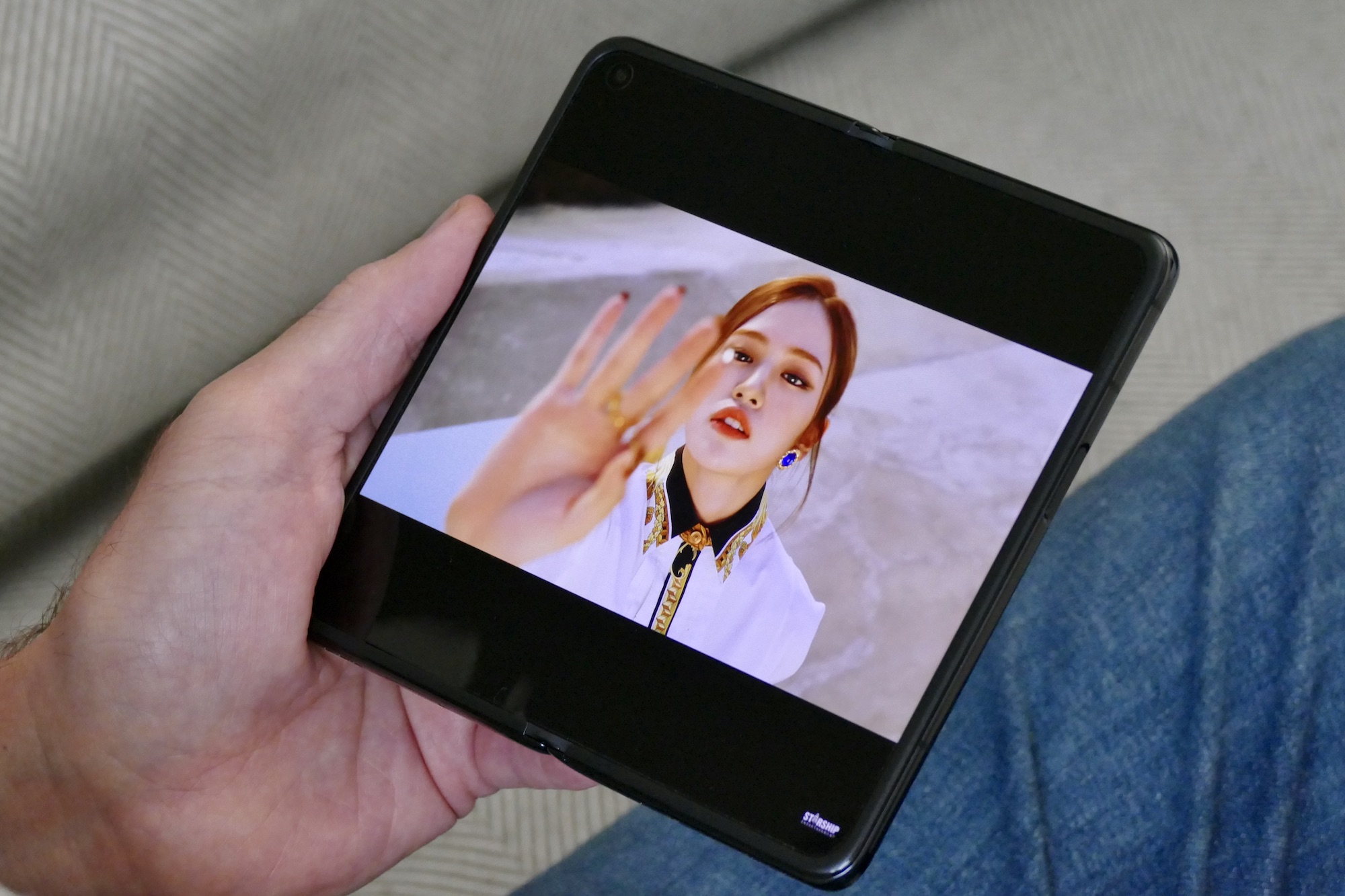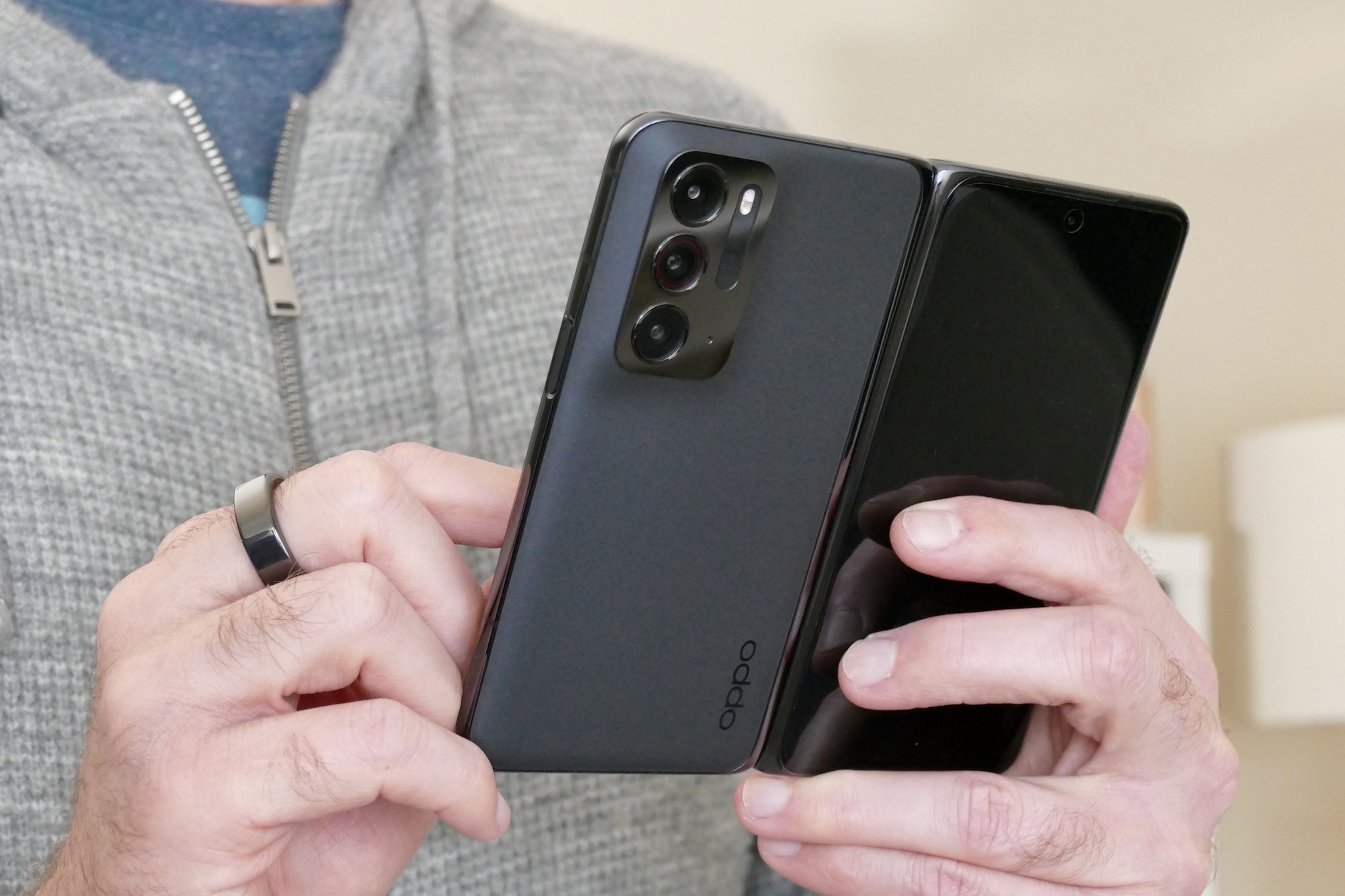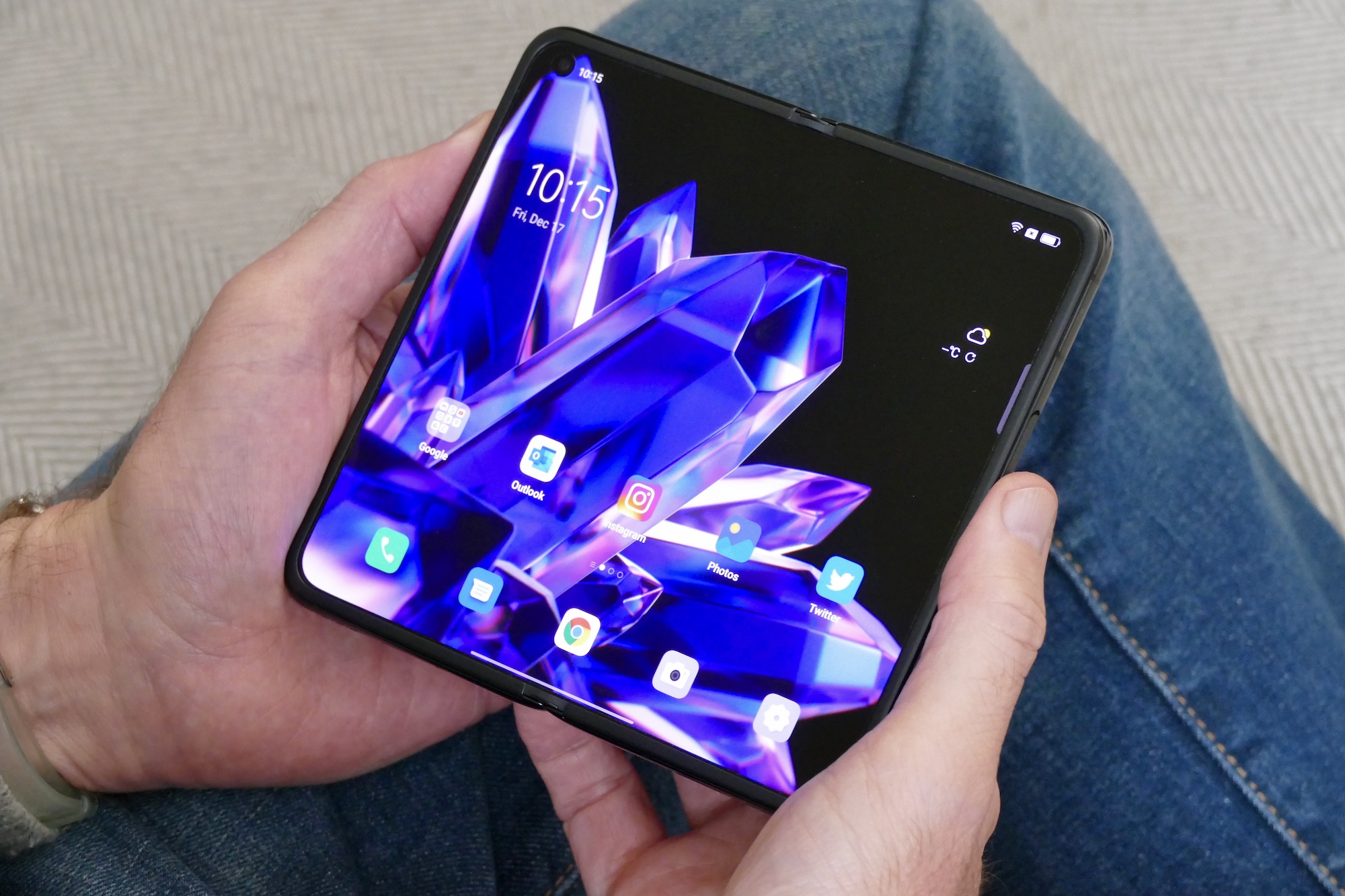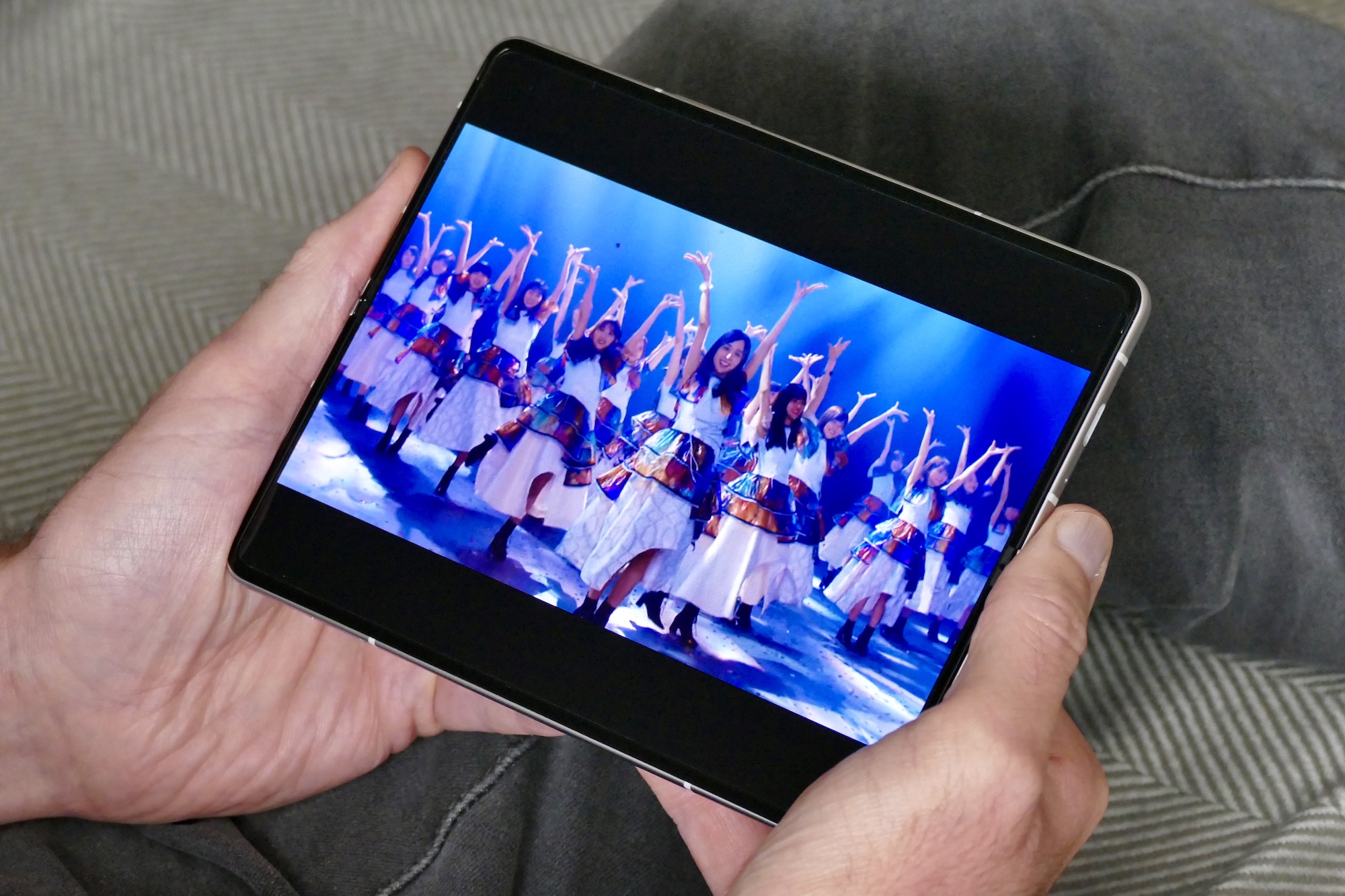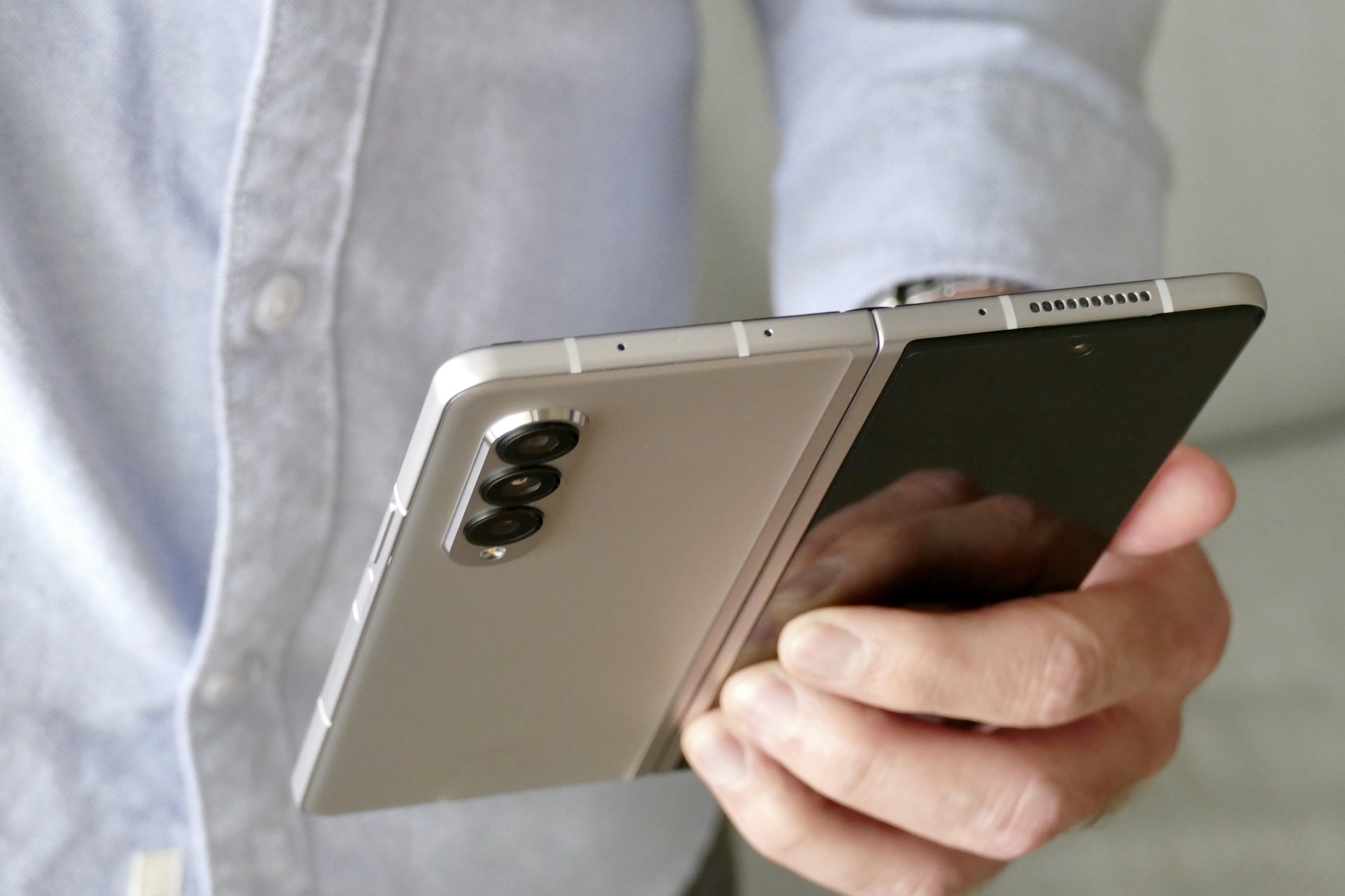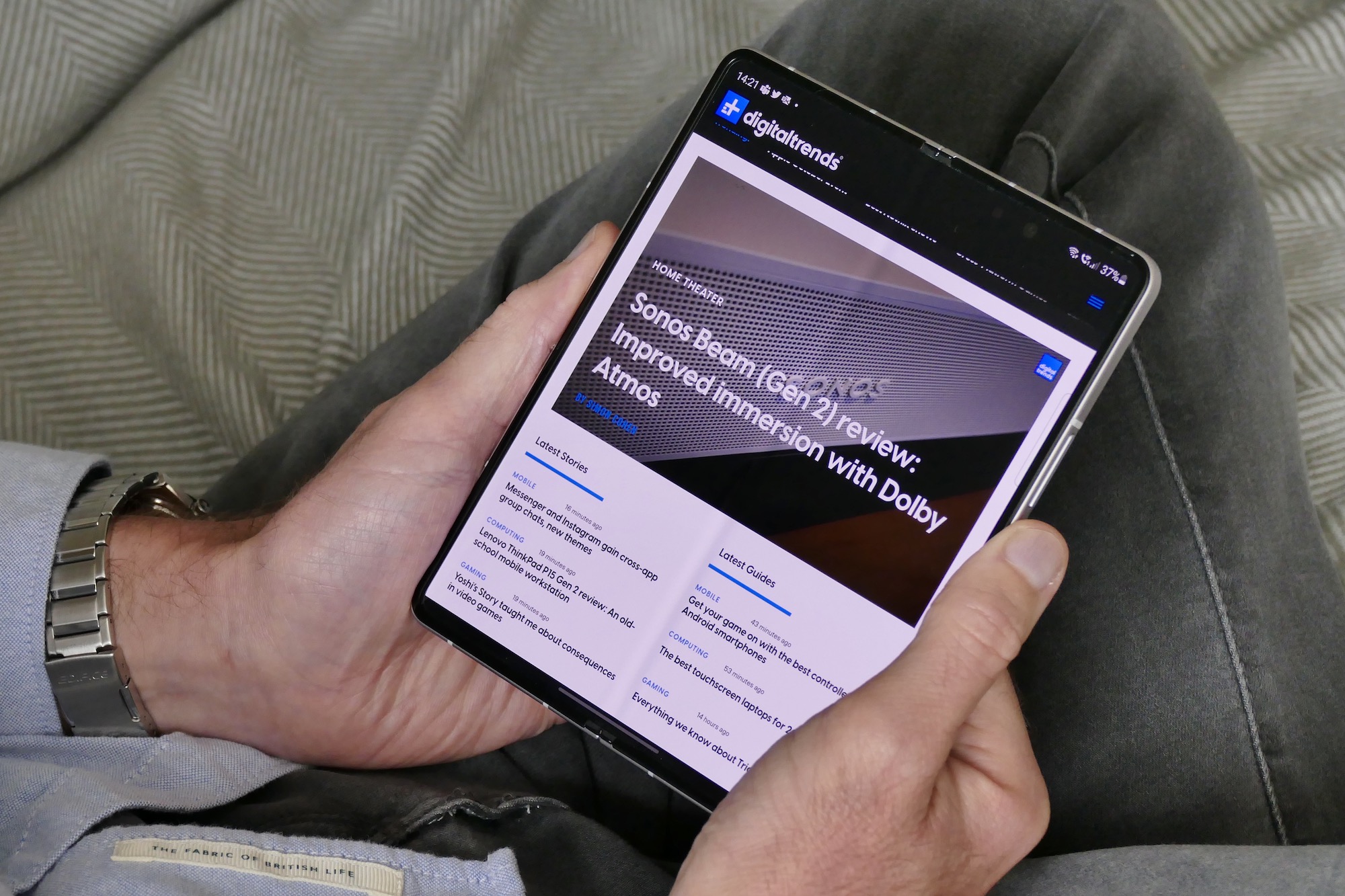If the Oppo Find N is one of the most important smartphones released this year, due to its chance to truly challenge Samsung’s current dominance in folding phones, how does it really compare with the Galaxy Z Fold 3 when you use them each day?
Since the Oppo Find N arrived last week, I’ve been using it alongside the Samsung Galaxy Z Fold 3, initially expecting to come up with a solid answer about which one is the best at being a folding smartphone. However, as time passed, I found neither of them is better than the other, and then realized this was the best possible outcome. Here’s why.
The differences
Before we get into how the two phones work alongside each other, we need to talk about the differences. Although both the Oppo Find N and the Samsung Galaxy Z Fold 3 operate in basically the same way, there are some differences that change the way you use both phones.

Let’s go through some specs first, so we know what we’re dealing with:
| Open | Height | Width | Depth |
| Samsung Galaxy Z Fold 3 | 158mm | 128mm | 6.4mm |
| Oppo Find N | 132mm | 140mm | 8mm |
| Closed | Height | Width | Depth |
| Samsung Galaxy Z Fold 3 | 158mm | 67mm | 16mm/14mm |
| Oppo Find N | 132mm | 73mm | 16mm |
The Oppo Find N is smaller overall, and this makes it more manageable, but surprisingly the Z Fold 3 is slightly lighter at 271 grams, compared to the 275 gram Find N. The Galaxy Z Fold 3’s larger body houses a 7.6-inch screen on the inside and a 6.2-inch, 25:9 aspect ratio screen on the outside, while the Oppo Find N has a smaller 7.1-inch inner display, and a 5.49-inch, 18:9 aspect ratio screen on the outside.
The cameras also differ. There are three 12-megapixel cameras in the module on the back of the Galaxy Z Fold 3 for main, wide-angle, and 2x telephoto duties, and a 50MP main, 13MP 2x telephoto, and 16MP wide-angle combination on the Find N. There are two selfie cameras on both phones, with the Find N getting two 32MP cameras in hole-punch cutouts. The Z Fold 3 has a 10MP outer camera in a hole-punch, but the 4MP inside selfie camera is an Under Display Camera, so it’s hidden from view.

Both phones use Qualcomm’s Snapdragon 888 processor though, but the Z Fold 3 only comes with 12GB of
Hold the phone
Now the stats are out of the way, what struck me first about using the two phones often was how I initially expected the Oppo Find N to always be more comfortable to hold, considering its smaller size and similar weight. In reality, it turned out to not be so simple.
When swiping and tapping the open screens, the widescreen (by comparison) Find N is harder to support comfortably with one hand than the squarer Z Fold 3, which has less overhang and therefore feels better balanced. Scrolling through Twitter with the Z Fold 3 in one hand (the chassis resting on your pinky finger, naturally), there’s little chance the phone will take a spill, but the wider Find N really does need to be supported by your other hand to feel truly stable.
This surprised me as if you hold the Find N with one hand and don’t interact with the screen, such as when reading an eBook, it’s better weighted than the Fold 3. The additional thickness in the chassis helps grip, and the smaller, squarer shape made me hold it between my thumb and forefinger at the corner, much like I would an Amazon Kindle. The Z Fold 3’s extra size makes it more fatiguing to hold this way.
Closed it’s a different story. The Z Fold 3’s thin, elongated body makes it a real pain to type on, while it’s far easier and more natural on the regularly shaped Find N. Apps scale more normally, too, while many have a weird pinched, vertical-letterbox look on the Z Fold 3. This is annoying, especially on apps that don’t scale correctly on the open Z Fold 3, forcing you to use the Cover Display instead. At least when this happens on the Find N it’s less irritating to interact with buttons and enter text.
They may share the same basic design, but one is not better to hold and use than the other. Which one is best for you will come down to how you want to use the phones, much like making the decision between the Galaxy Z Fold 3 and the Galaxy Z Flip 3, a comparison which also has an impact on the next section.
Watching video and playing games
The open screen is made for watching movies and playing games, so what are these two like? The Oppo Find N’s screen configuration means you don’t have to rotate the phone to watch video in landscape orientation, and that makes it feel seamless and well thought out, although it’s hardly an effort to switch the Z Fold 3 round when you watch something. The Z Fold 3’s screen is warmer and more vividly colored than the Find N’s cooler palette, but both are equally sharp.

What strikes you watching video on both is how phone-like the Find N is, and how tablet-like the Z Fold 3 is. You may not think the 0.5-inch difference in screen size would change things much, but it really does. Video on the open Find N is similarly sized to a big non-folding
This definitely made me consider the Oppo Find N more of a competitor to the Galaxy Z Flip 3, and more ideally suited to people who want a compact phone without sacrificing a large screen should they want it. There’s no such compromise available with the Z Fold 3, and the large open screen is its main selling point. If you want to watch a lot of video, the Z Fold 3 is the way to go in this respect. The audio experience is excellent on both phones, with loud sound delivered through stereo speakers.

The big screen is as good for games as it is for video, and neither phones feel heavy when holding them with two hands. You do have to stretch for buttons sometimes, depending on the game, much like you may have to when playing on a tablet. I played Asphalt 9: Legends on both phones for a while, and while I do think the Z Fold 3 was a tiny bit smoother, you probably wouldn’t notice unless you played back-to-back. I’m using the 12GB Find N.
However, there was an issue, and it’s to do with the software. The Oppo Find N is a China-only phone at the moment and although my review sample came with Google Play installed, it did not have full Google integration. Despite installing and activating Google Play Games, Asphalt 9: Legends would not connect so I couldn’t switch to my existing profile. If you rely on Play Games, consider this if you’re thinking about importing one, as more work will be needed to make it work.
Is one better than the other?
No, the Oppo Find N is not better than the Galaxy Z Fold 3, or vice versa, and before anyone shouts about indecision, don’t be so quick to judge this as a wishy-washy conclusion, because it’s actually the best possible outcome. There are so few folding smartphones available it would be disappointing if these two major 2021 releases crossed over and simply served the same niche. Instead, the Oppo Find N manages to squeeze in-between the Z Fold 3 and the Z Flip 3, becoming the answer for people who want a large folding

On the outside, it could be seen as more of what we’ve already got, whether it’s the Z Fold 3 or the Huawei Mate X2, but in reality, Oppo has engineered the Find N to be just different enough that it enhances the world of folding smartphones, rather than simply joining the club. Yet it’s still absolutely a true folding
There is one obvious caveat to the “neither is better” conclusion, and that’s unless you live in China, you won’t be able to buy the Oppo Find N, making it harder to get hold of than the widely available Galaxy Z Fold 3. But the Find N’s existence and success as a genuine alternative gives me hope we’ll see more folding smartphones in 2022 that, if you’ll forgive the pun, open up this exciting new tech to a lot more people.
Editors' Recommendations
- Should you buy the Samsung Galaxy Z Fold 5 or wait for the Z Fold 6?
- Samsung Galaxy Z Fold 6: news, rumored price, release date, and more
- These two Android foldables cost less than one Galaxy Z Fold 5
- Have a Samsung Galaxy Z Flip 5? Here are 10 things you need to do
- I thought I’d hate the Galaxy Z Flip 5 — until I changed one thing

